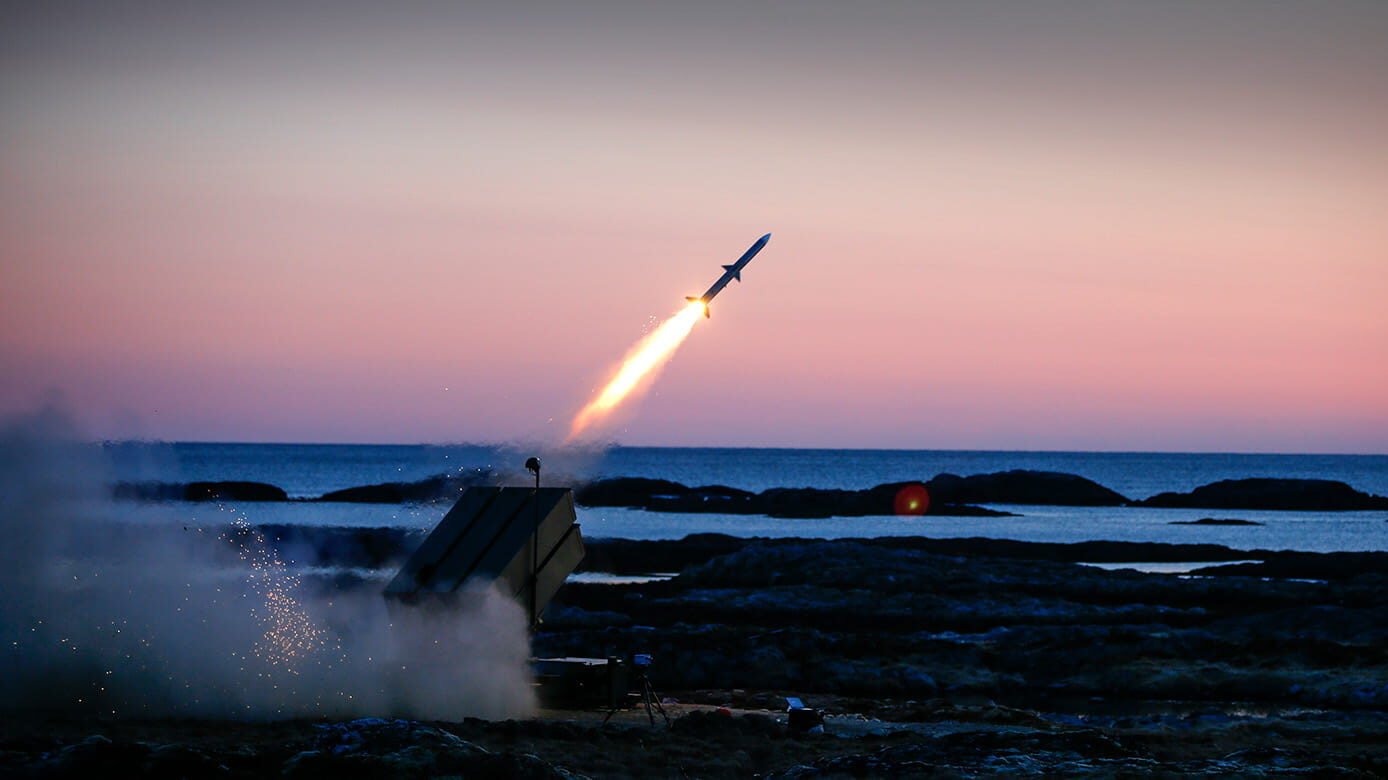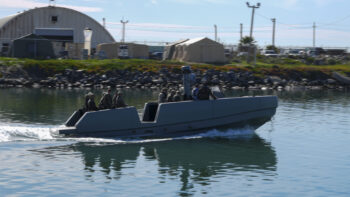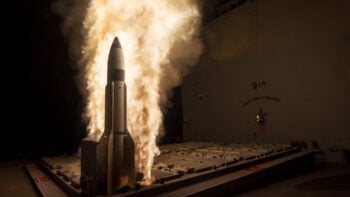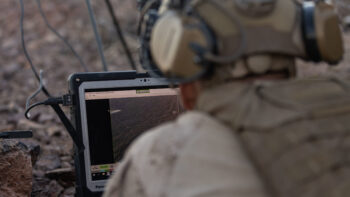
The National Advanced Surface-to-Air Missile System, or NASAMS, firing a missile. The system, jointly produced by the US and Norway, is a critical part of Ukraine’s air defense. (Kongsberg Defense and Aerospace)
WASHINGTON — Earlier this month, Norway’s government announced plans for a dramatic increase in defense spending over the next 12 years, with a long list of weapon acquisitions it plans to make.
Among the key priorities outlined was an increase in air defense capabilities at all levels. But even as Oslo looks into its options for a new long-range, high-end missile defense system, the “most important [thing] is to buy more of what we already have,” Gen. Eirik Kristoffersen, Norway’s chief of defense, told Breaking Defense during a recent visit to Washington.
“So, from handheld, counter-UAV air defense systems, up to, I would say, medium-range NASAMS” are the first priority, Kristoffersen said. “We have already invested, and we need to invest more in that. We know it’s working, it’s tested and it’s proven its effectiveness in Ukraine.”
Oslo has donated a number of NASAMS (National Advanced Surface-to-Air Missile Systems), co-developed by US firm Raytheon and Norwegian firm Kongsberg, to Ukraine for its defensive effort against Russia. The lessons learned from seeing the system in the field, along with the kind of counter-drone efforts Ukrainians have had to employ, are directly filtering into Norway’s approach to building out its air defenses, Kristoffersen said.
One of the big lessons from that conflict: volume matters, especially at the lower level.
“We need to increase spending in simple systems that we need a huge volume of that can, basically, counter very low-tech drones that could pose a threat, so we don’t end up using the most sophisticated missile systems against something that is very cheap to buy, and basically, you will not have enough volume,” he said. “So I’m looking for better counter-UAS systems on the tactical level, to deal with drones on the tactical level.”
He added that he’s open to any solution the market can provide: “Everything that could take down drones. … If there’s a cheap low-tech drone, the response has to be as cheap and low tech as possible. And then you need to find out how should this balance out through the force.”
RELATED: To counter drones, Army seeks layers rather than ‘silver bullets’
While that represents the near-term air defense priority, Kristoffersen was open that the long-range air defense option is going to take longer to sort out. While not wanting to put a direct timeline on it, he emphasized that he and his team need to really dig in to make sure they are buying the right system, given how fast both missile and counter-missile technology is developing.
“I don’t have a clear answer today what sort of system we should buy. I think we need to not waste any time, but we need to find out, what do you want to invest in?” he said. “Is it Patriot systems, something else? These are very costly, requires a lot of people to man. So that’s a that’s a big decision.
“I hope we can make that announcement as soon as possible. But I need to look more deeply into it. There are so many systems out now,” he added. “So we need to compare all systems, and then the other technology development, also in industry. So we’ll see.”
More broadly, Kristoffersen said, a major focus of the new funding plan will be on making sure Norway has enough volume overall — of both manpower and materiel — to handle a future crisis. That includes expanding the army from one brigade to three and planning to increase the weapons stockpiled throughout the country.
“We need to think bigger and act faster, and we need to move into more volume,” he said.
Air Force stands up two new EW squadrons, but still short on personnel
“We have recognized in our threat analysis that we need these capabilities in our wing in order to make our three wing missions executable,” Col. Joshua Koslov said of activating two EW squadrons. “And so that’s exactly what’s driving it.”


























